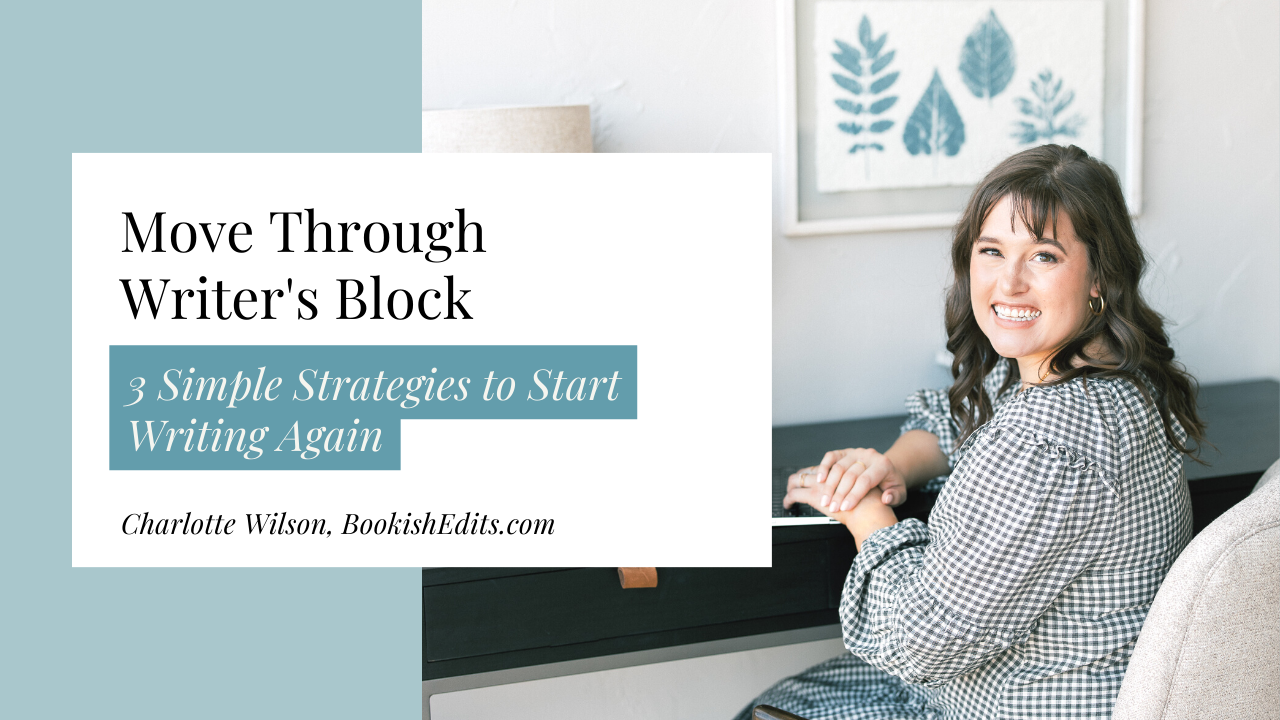3 Ways to Move Through Writer’s Block
Writer’s block: the inevitability that every writer dreads. We can’t escape it. If you write, writer’s block is likely a well-known (and unwelcome) acquaintance. What does writer’s block look like? That can vary from writer to writer, but for me, writer’s block shows up as
resistance to writing
no ideas
bland, repetitive writing
stagnation in ideas, style, or both
a deep desire to slam the laptop shut and never return
You can find an abundance of advice targeted to help you “beat writer’s block,” but I don’t think that mindset will work. The trick to “beating” writer’s block is actually to surrender and move through it instead. Rather than thinking of writer’s block as your enemy, consider it a family member that you don’t like but have to put up with sometimes. Allow writer’s block to come and go, and meanwhile practice the right techniques to move through to the other side.
Think of your mind like a playground: When you sit down to work on your manuscript, you’re going to the same set of swings. You know these swings, they’re fun, and you don’t get sick of them. But then one day you head to the swings, and they’re all taken. You can’t play there, and you don’t know what to do except wait (and maybe glare at the kids who took your spot). But it doesn’t have to be this way.
I have three actionable strategies that can keep you from spinning out, move the writer’s block up and out, and get you back on those swings (or rather writing what you want to write).
Write from a different point-of-view.
You’re feeling stuck in your current manuscript? Try writing from a different point-of-view. Remember our playground and the swings: When you can shift your mind from the swings you can’t play on to the monkey bars that are open, your brain has something new to navigate, play with, and enjoy. This shift in perspective can jolt your imagination just enough to give that writer’s block the time it needs to swing while you perfect your monkey bar maneuvers. You don’t even have to use anything you write from another POV in your actual draft, but your brain will thank you for trying something different.
In memoir, try writing from the perspective of one of your side characters (or even your antagonist, if you’re feeling daring). Writing your life from a different point-of-view will help you spot connections you hadn’t seen before and will likely create more nuance and empathy in your story.
Write in a different form or genre.
You can ditch the playground altogether and play soccer instead. If you’re spinning your wheels trying to make headway on your manuscript, you can flip the script and write something completely different. Taking a break from your usual genre, form, and style can make you uncomfortable in fun and creative ways (and allows you to playfully sidestep the frustration inherent in writer’s block). Writing a memoir? Try your hand at a short story. Known for your friendly prose? See what some poetry can do for you.
Remember, none of this has to be great. (In fact, it probably won’t be.) But by refusing to play the writer’s block game, you’re once again engaging your creativity in a new way. That writer’s block won’t have anyone to tease and will very soon move on.
Talk to someone about it.
I know, talking about our writing can be scary. To stick with our playground metaphor, when you can talk to someone about your block, you’re finding friends to chat with rather than stew in your own frustration impatiently waiting for the writer’s block to finish up on those damn swings already. Before you know it, the time has flown by, the swings are free again, and you have some new friends to keep you company. Talking to someone about your writer’s block achieves a few things:
(1) In verbalizing your block, you’re moving it out of your head. Your mind will feel a little less crowded as you’ve created a little more space between you and your block.
(2) When you create that space in your brain, you’re freeing up your mind to problem solve and reconfigure things for you. In talking it out, you’re going to start to see new connections and possibilities you hadn’t considered before.
(3) You’re connecting with another person, a crucial experience for the muddied writer. Writing is so solitary that it can quickly become isolating if you’re not careful. By confiding in someone else, you’re nurturing those connections that will keep you grounded. (And maybe they’ll even have some ideas for you!)
Move through writer’s block.
Remember, writer’s block isn’t something to fight. This is a common headspace for all creatives, and you’ll feel like yourself faster if you stop resisting. Giving up the resistance isn’t giving in to the block: you’re surrendering in a way that gives the writer’s block less power and gives you brain more room to think and create.
Next time writer’s block is taking up all the swings, try one of these techniques and see what happens. (I bet you’ll be surprised at what can happen for you!)
Not struggling with writer’s block, but just can’t find the time to write? I’ve got a solution for you! Download my free workbook Time to Write to learn the three simple keys to creating the perfect writing practice just for you. You’ll be swimming in writing time before you know it!


